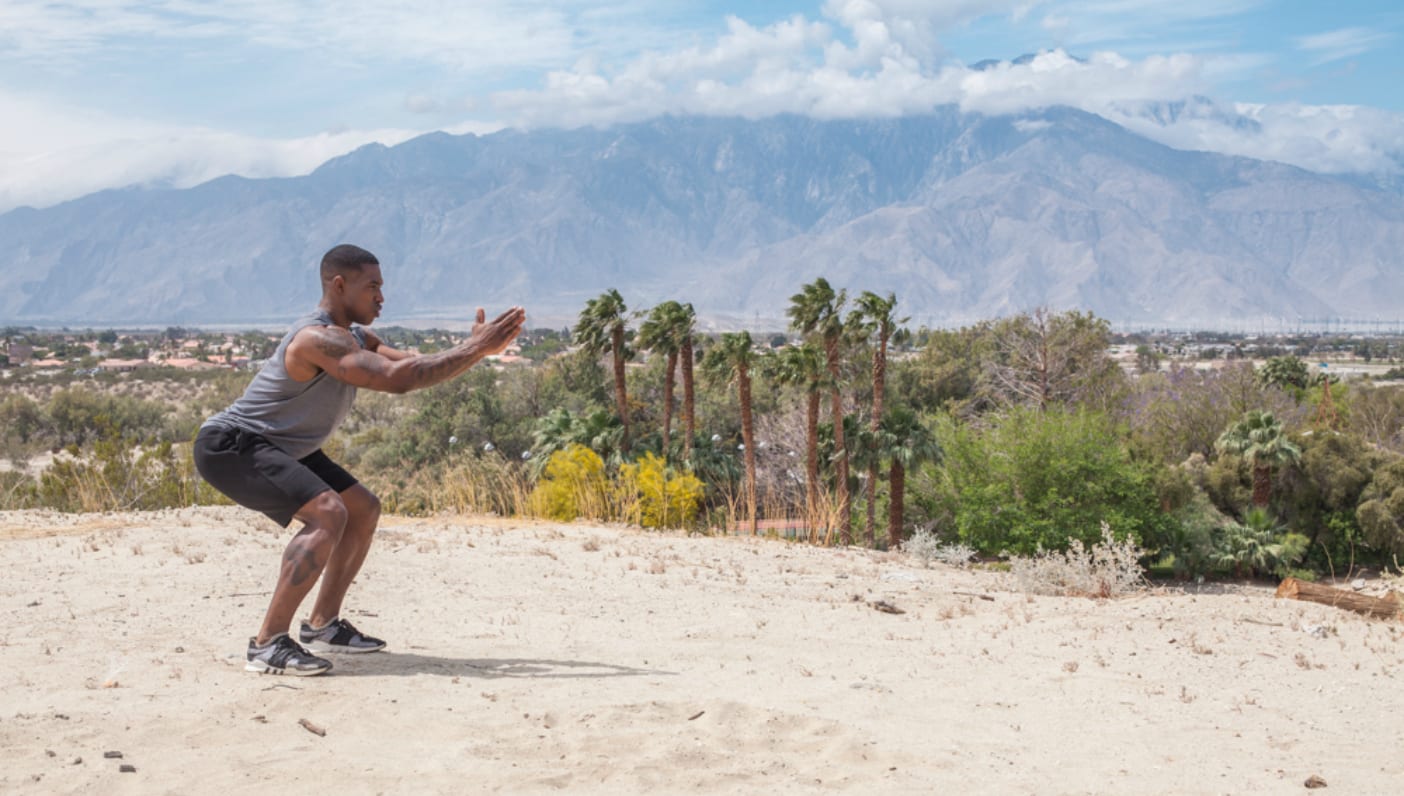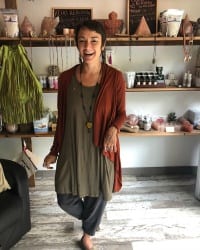
Learn from Jacy Cunningham, founder of The Jacy Method, in our 10-Day Wellest Challenge, available on Wanderlust TV.
The first time I cried—really cried—on my mat was at the original Yoga to the People in Greenwich Village, New York. I didn’t see it coming, and had never experienced anything like it. I was in Pigeon Pose (who hasn’t lost it at some point in Pigeon, amiright?), and all of a sudden, all the heartache and pain and sadness and anger I’d been carrying for years in my hips welled up and spilled over, leaking salty tears onto the hardwood floor and my outstretched arm. I walked out of that studio feeling as if I had been born again, a new woman. It was as if an anvil had been uprooted from my gut. It was the first time I really fell in love with yoga—as it was probably the first time that my practice had transmuted from a moment on the mat to a tool I could use in my everyday life.
We tend to define ourselves by our trauma and our experiences. Part of our practice is to unstick these stuck thoughts, to rewrite the storylines of those narratives, and to move around energy that holds us down. Jacy Cunningham, founder of The Jacy Method, believes that pushing healthy physical limits and exploring our edges is what not only helps us rewrite, but to fall back in love with ourselves and the world around us.
“I think motion creates emotion,” says Jacy. “And so it’s like when we move, when we get outside and we run, or we climb or we do anything regarding our bodies, there’s a processing of emotion that comes in play. We’re moving as a response to something.” Just what that movement encourages is, of course, different for every person.
Trauma as Inspiration
The adage that what doesn’t kill us makes us stronger has been around for so long for a reason. We all come to the mat with varying degrees of personal challenge, pain, or suffering that we look to release. “I think that one of the biggest things that we have to deal with in life is the idea that we are born into a certain existence that’s already defined,” says Jacy. “I was born as a black male. “I already had an identity before I could create anything, before I could really look into the creativity behind life and behind the veil,” he recalls.
“One of the biggest things that we have to deal with in life is the idea that we are born into a certain existence that’s already defined.” – Jacy Cunningham
Jacy said that going to private school as a teenager was further confusing. “I was one of three black kids in the whole school, and it traumatized me,” he says. When when he returned home, he spoke and dressed differently than his friends or family. But Jacy took hold of those storylines and rewrote his narrative.
“Trauma is not always a negative thing,” he says. “I think what trauma does is it forces us to look at our life a little differently. It forces us to go introspective. It forces us to go inside and that’s where we ignore a lot of the messages that come.”
Learning to Articulate Feelings
Just looking at the messages, however, isn’t enough to break patterns and the years of self-talk we’ve perpetuated. Jacy believes that getting into the physical body is one way to begin to take that introspection to the next level. “I think movement is such a, it’s a form of medicine, and it’s one of the oldest forms of medicine that we have,” says Jacy. But it doesn’t take a spoonful of sugar to swallow this tonic—Jacy brings it all to the table in his classes. He begins every class by greeting every student, as a way to break the ice, and a way to read people so he can gauge the energy in the room. Because of this, no two classes are the same.
“My class is an example of what our lives are, which is sometimes happy, sometimes we’re sad. Sometimes we’re up, sometimes we’re down,” he says. “My class is a combination of all the elements of life that I think we need to observe and reflect upon for an hour and a half.” Jacy encourages his students to not only enjoy the movement—to find gratitude and comfort in their body’s ability to move—but also to begin to unravel those bound emotions resulting from various traumas of our past. “That’s why I make people get silly. I make them take a breath and then scream. I want them to feel life and the life force is not always directed in the most linear way,” he says.
Displacing Trauma Makes Room for Gratitude
When you’ve begun to unravel the narratives you tell yourself—to work through the traumas of your past and in your bones—you’re able to make more space to enjoy being alive. “One of the most recent things that’s happened to me that has made me look at life in such a loving way is that I lost my brother,” says Jacy. He was completely unprepared for his 46-year-old brother to die of a heart attack, and it caused him to recalibrate the way he was living.
“Trauma is such a life force,” he says. “It breathes life into us that we didn’t know was there.” He believes that he’s gone through the trauma that he has so he can show up for his students in a way he might not otherwise be able to. He brings his own pain to the table, so his students feel empowered to as well.
“Trauma is a life force. It breathes life into us that we didn’t know was there.” – Jacy Cunningham
Jacy understands that nothing is a silver bullet—he acknowledges that there will always be bad, even miserable, days. But movement has given him a toolkit to deal with them. “This is such a gift, it’s such a blessing, and I’m so grateful,” says Jacy. He often pauses during a workout to take a moment and feel, really feel, this gratitude. He talks a lot about love—and how much he loves being alive. “I love having a breath in my body,” he says. “I love having knees that work, and ankles that work, and feet that work. I think those things are such moments of gratitude for me every day,” he says. “I wake up, and I instantly move, because I want my body to feel alive. I want my body to recognize that, ‘Oh. We’re still here.’”
Yes. We are—and hopefully for a long time to come. And when we rewrite our narratives and take back the lessons of our trauma, we’re able to find joy in that body while we’re at it.
—
 Lisette Cheresson is a writer, storyteller, yoga teacher, and adventuress who is an avid vagabond, homechef, dirt-collector, and dreamer. When she’s not playing with words, it’s a safe bet that she’s either hopping a plane, dancing, cooking, or hiking. She received her Level II Reiki Attunement and attended a 4-day intensive discourse with the Dalai Lama in India, and received her RYT200 in Brooklyn. She is currently the Director of Content at Wanderlust Festival. You can find her on Instagram @lisetteileen.
Lisette Cheresson is a writer, storyteller, yoga teacher, and adventuress who is an avid vagabond, homechef, dirt-collector, and dreamer. When she’s not playing with words, it’s a safe bet that she’s either hopping a plane, dancing, cooking, or hiking. She received her Level II Reiki Attunement and attended a 4-day intensive discourse with the Dalai Lama in India, and received her RYT200 in Brooklyn. She is currently the Director of Content at Wanderlust Festival. You can find her on Instagram @lisetteileen.